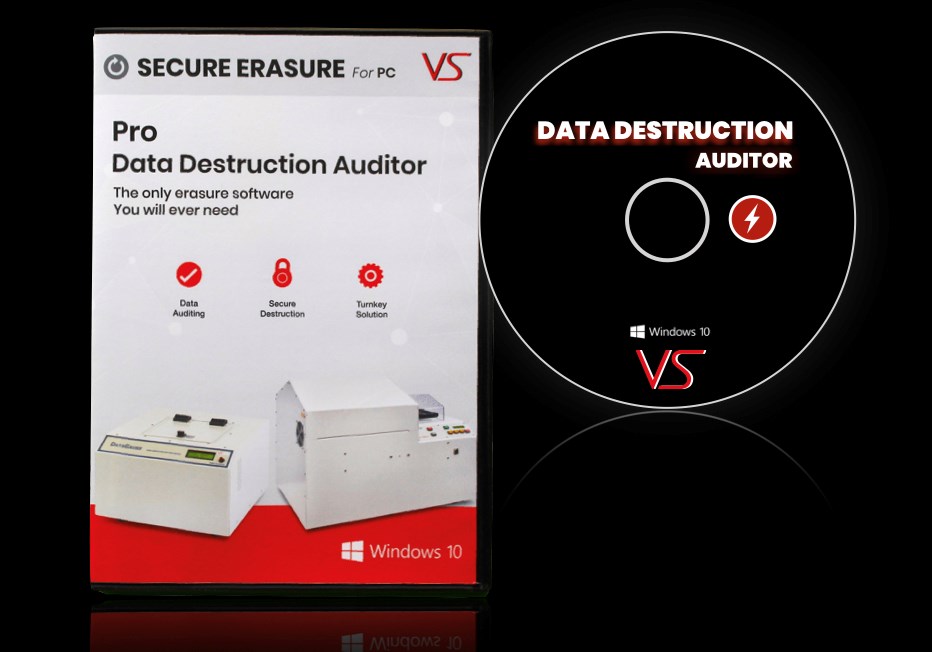Ideal Practices for Data Destruction to Strengthen Your Cyber Security Framework
Ideal Practices for Data Destruction to Strengthen Your Cyber Security Framework
Blog Article
The Importance of Effective Data Destruction Practices in Shielding Sensitive Details and Ensuring Computer Protection
In a period where information breaches are increasingly usual, the importance of effective data damage methods can not be overemphasized. Organizations face significant risks when sensitive details is inadequately taken care of, potentially causing unapproved accessibility and severe financial repercussions. Implementing robust data destruction approaches not only mitigates these threats but also straightens with lawful conformity requirements, ensuring that organizations copyright their credibility and foster client trust. However, the question stays: what certain strategies can be used to improve these methods, and exactly how can organizations successfully integrate them into their overall cybersecurity structure?
Recognizing Information Damage
Recognizing information devastation is important in today's electronic landscape, where sensitive info can easily be compromised. Effective data devastation involves not just ensuring however deleting files that data is irretrievable through extensive approaches. This process is essential for companies that handle confidential customer info, copyright, or interior records, as any violation can bring about extreme economic and reputational consequences.
Information damage encompasses various strategies, including shredding physical media, degaussing magnetic storage gadgets, and utilizing software-based solutions that overwrite information multiple times. Each technique offers a specific objective and must align with the sensitivity of the information being disposed of. For example, physical damage is often chosen for disk drives having extremely personal information, while software program techniques might be enough for much less sensitive details.
Additionally, sticking to market standards and guidelines, such as the General Information Protection Policy (GDPR) or the Health Insurance Portability and Accountability Act (HIPAA), is critical for conformity and to minimize lawful dangers. Organizations should establish a robust information damage policy, train workers on finest techniques, and on a regular basis audit their treatments to make sure that all sensitive information is disposed of securely and effectively.
Dangers of Inadequate Practices
Inadequate data damage methods expose companies to substantial dangers that can have significant consequences. When delicate details is not properly disposed of, it stays at risk to unauthorized access, which can cause information violations and identification theft. Such occurrences not only compromise the security of individuals however likewise taint the company's track record, resulting in a loss of client trust fund and potential financial repercussions.
In addition, regulative compliance is increasingly rigid in numerous sectors. Failure to follow information damage policies can cause hefty penalties and legal actions against organizations. These fines can divert and strain economic sources focus from core organization procedures.
Additionally, the abuse of recurring data can lead to copyright burglary or corporate espionage, jeopardizing affordable benefits (data destruction). The influence of poor information devastation expands beyond instant economic losses; it can additionally result in lasting damages to brand name stability and market position

Organizations must acknowledge that information protection is not only about avoiding breaches; it additionally includes the liable administration of information throughout its lifecycle. Disregarding reliable information destruction methods can have catastrophic effects, highlighting the necessity for robust measures to alleviate these threats.
Ideal Practices for Data Devastation
Applying effective information devastation methods is necessary for guarding sensitive details and preserving compliance with governing requirements. Organizations needs to take on a multi-faceted strategy to ensure that data is irretrievable, consequently protecting against unapproved access and potential breaches.
First, data should be classified based upon level of sensitivity, permitting companies to use ideal destruction approaches customized to the degree of risk. For electronic data, utilizing software-based data-wiping tools that comply with sector requirements can efficiently overwrite existing information. Physical destruction methods, such as shredding or degaussing, are vital for tools that keep sensitive information, ensuring total removal.
Establishing a clear data retention policy is important, outlining for how long various types of information must be maintained prior to destruction. Routine audits of data storage space systems are additionally essential to identify unneeded or out-of-date information needing pop over to this site elimination.
Furthermore, training employees on the significance of data damage and the specific methods to comply with fosters a society of protection within the organization. Ultimately, keeping documentation of data destruction refines gives responsibility and supports compliance with inner policies and outside regulations. By adhering to these ideal practices, organizations can dramatically alleviate the threats associated with data exposure.
Legal and Compliance Considerations

Failure to follow these laws can lead to severe fines, consisting of substantial penalties and reputational damage. Organizations must execute a robust information damage his explanation policy that lines up with these legal frameworks and provides clear guidelines on the proper approaches of information disposal, whether physical shredding or digital wiping.
In addition, keeping paperwork of information destruction tasks is necessary for demonstrating conformity throughout audits or assessments. By focusing on legal and compliance factors to consider, organizations can improve their data safety posture and foster count on with stakeholders and customers, ultimately adding to a much more safe information monitoring atmosphere.
Advantages of Effective Information Damage
Efficient data devastation practices expand past plain compliance; they offer significant advantages to organizations that prioritize them. By guaranteeing that sensitive details is irretrievably damaged, organizations mitigate the risk of data violations and the potential financial effects connected with them. This aggressive strategy not just safeguards against unapproved accessibility however likewise enhances the general reliability of the company in the eyes of customers and stakeholders.
Executing robust data destruction approaches, such as physical devastation of storage space tools or advanced data wiping techniques, adds to the strengthening of a company's cybersecurity posture. data destruction. It minimizes the probability of copyright theft and protects exclusive details, consequently preserving an one-upmanship in the market

Conclusion
In final thought, effective information destruction techniques are essential for securing delicate information and boosting total computer system security. Eventually, a commitment to robust information devastation methods fosters a society of obligation, thus reinforcing an organization's cybersecurity posture and preserving customer depend on.

Report this page